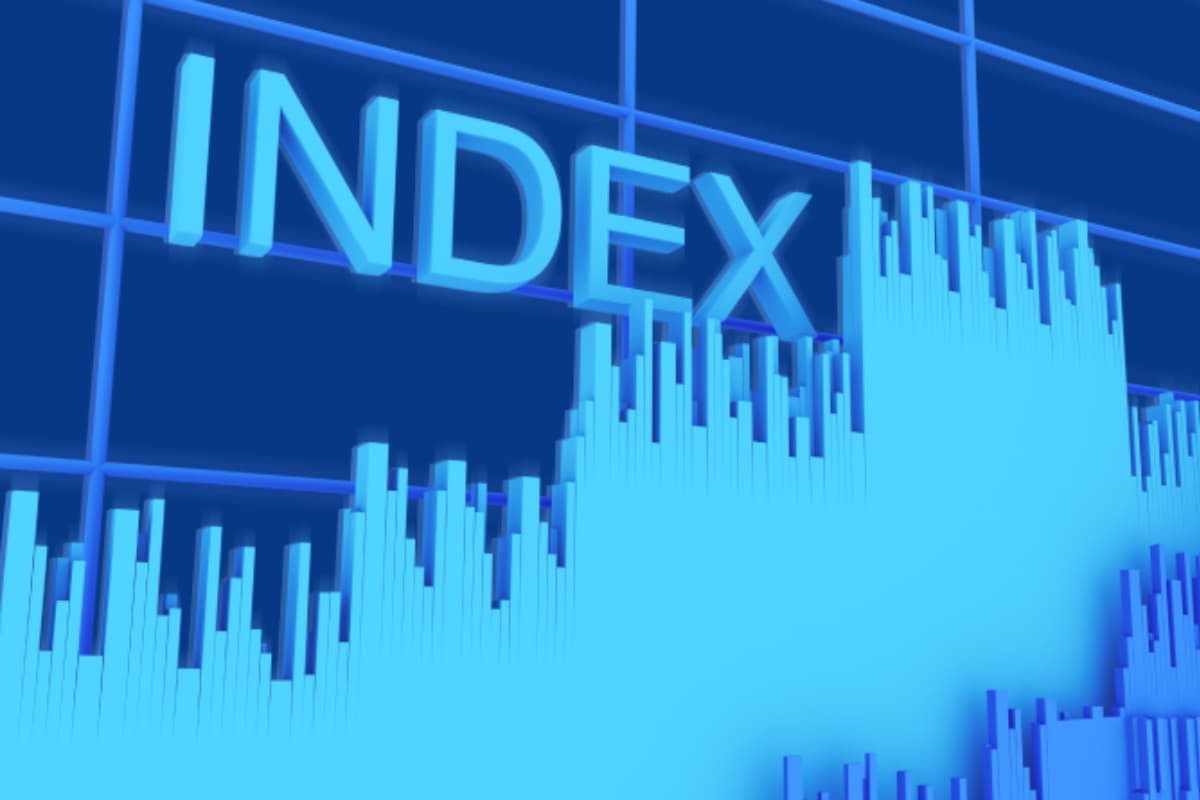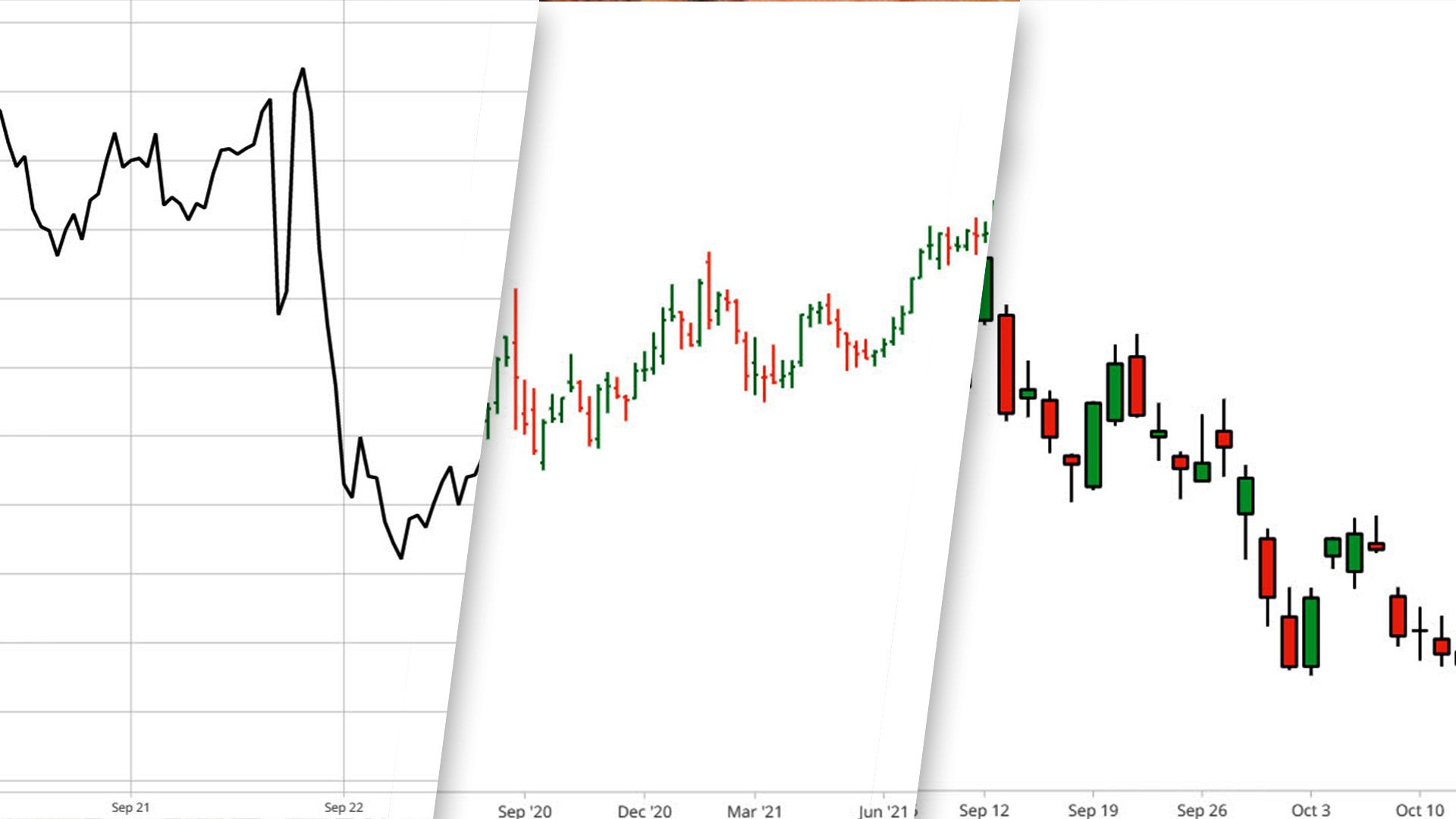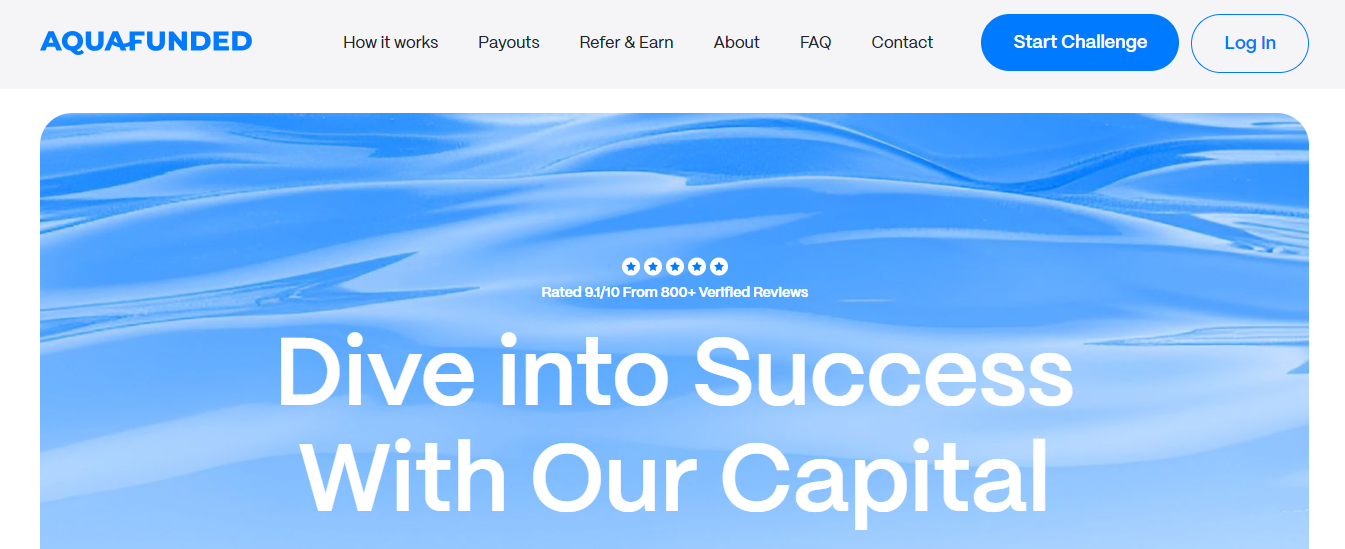6 Best Day Trading Indices
Discover the top Day Trading Indices to watch this year. Learn which markets offer the best opportunities for active traders.

You watch the S&P 500 open and spot a setup that could pay off if you act fast, yet platform lag or wide spreads erase your edge. Which of the Best Brokers For Day Trading gives you the execution and market data to move from small plays to pro trading with a funded account?
This guide lays out clear steps on trading indices intraday, from reading price action on charts to managing risk with futures or CFD positions, so you can build the skills that funded programs demand.
AquaFunded's funded trading program helps you turn those skills into a funded account by offering real capital once you meet simple performance targets and show consistent execution and risk control.
Summary
- Trading indices reduces cognitive load and produces cleaner intraday setups. Over 50% of day traders focus on indices due to their high liquidity, which improves fills and reduces false signals. This is where AquaFunded's Funded Trading Program comes into play.
- Index exposure cuts operational and per-trade costs because a single futures contract or CFD can replace multiple stock trades, and index day trading can reduce risk by 30% compared to individual stocks. AquaFunded's Funded Trading Program addresses this by centralizing index exposure and streamlining size controls.
- High liquidity in major indices enables scalable sizing and tighter execution. For example, the Nasdaq 100 averages about 200 million shares traded daily, which supports rapid momentum plays with minimal slippage. This is where AquaFunded's Funded Trading Program comes into play.
- Realistic outcome benchmarks matter, since over 70% of day traders lose money. At the same time, disciplined systems can approach aspirational ceilings, such as annual returns of up to 20% or consistent intraday targets of 1% to 2% per day. AquaFunded's Funded Trading Program fits in by providing funded capital and a clear rulebook for traders who demonstrate consistent performance.
- Execution quality and broker choice directly change profitability, so run a slippage simulation over 100 micro-trades and test fills during news spikes to expose hidden costs before scaling. AquaFunded's Funded Trading Program addresses this by surfacing real-time risk metrics and configurable challenge paths that reflect practical execution constraints.
- Methodical testing prevents false edges, for example, use time-boxed A/B trials of 30 sessions per index and validate signals across 60 to 90 sessions before automating to avoid luck-driven failures. This is where AquaFunded's Funded Trading Program comes into play.
Benefits of Day Trading Indices

Trading indices gives you a cleaner, more actionable way to trade intraday: it compresses the number of signals you monitor, lowers per-trade costs, and opens targeted sector or regional exposure without single-stock idiosyncrasy. Each of those advantages strengthens disciplined risk management and makes systematic strategies easier to execute consistently.
1. Simplicity in trade selection
Index markets let you trade the broad motion rather than dozens of individual narratives. When traders are juggling 30 tickers across sectors, cognitive load spikes and decision fatigue set in; the typical pattern I see is traders simplifying to one or two indices to regain focus and improve execution. That clarity speeds decision loops — cleaner setups, fewer false signals, and faster position sizing — so you trade price behavior, not headlines.
2. Cost efficiency
Trading an index usually means fewer round trips and lower friction per exposure, which matters fast when you scale entry frequency or use leverage. Because an index aggregates many constituents, one contract or CFD can stand in for multiple stock trades, reducing commissions and slippage that would otherwise pile up. In practice, that reduces the hourly and daily costs of staying active, which is why cost-conscious intraday traders tend to prefer index contracts and low-spread execution.
3. Sector-specific exposure
You can target themes without single-stock risk. Want tech momentum without picking a breakout winner? Use a technology index to capture the sector trend while avoiding idiosyncratic earnings shocks. This matters when broad-sector moves drive most intraday volatility and when your edge is timing rather than stock selection. In short, indices let you express a macro or sector view while keeping trade management straightforward.
Most traders manage this by scanning stock lists and piecing together hedges because it feels familiar, and it does work for small portfolios. That approach breaks down, though, as you increase position counts: trade complexity explodes, reconciliation consumes time, and hidden costs stealthily erode edge. Platforms like Funded Trading Program centralize index exposure, streamline size controls, and integrate risk checks, letting traders retain tactical control while cutting that operational drag.
4. Accessibility and exposure to overall markets
Indices open global markets without a dozen custodian relationships, and they tend to be the deepest and most traded instruments available. Over 50% of day traders focus on indices due to their high liquidity, which explains why execution is cleaner and fills occur closer to intended price levels, especially during peak hours. That liquidity makes it easier to scale positions, use leverage responsibly, and exit quickly when conditions change.
5. Diversification
Trading an index spreads single-company risk across many names, which smooths intraday swings and reduces the chance that one unexpected earnings print ruins a session. Index day trading can minimize the risk by 30% compared to trading individual stocks, a helpful indicator of why traders seeking steadier intraday PnL prefer baskets over individual stocks. Think of an index like steering a river current rather than paddling one stream at a time; the result is less return variance and a cleaner playground for disciplined stop placement and position sizing.
What this means for you is practical: fewer watchlists, lower commission drag, more straightforward rules for stops and scaling, and a better environment for mechanical strategies that require reproducible conditions. The tradeoff is lower single-stock upside, but if your goal is repeatable intraday compound growth under disciplined risk controls, indices are often the smarter path.
That simple advantage hides a deeper choice about which indices reward disciplined, repeatable intraday work — and the next section will reveal the surprises traders usually miss.
Related Reading
- What Is Considered a High VIX
- What Is a Trading Session
- What Is Support and Resistance in Trading
- What Is a Stock Market Index
- How to Trade S&P 500 Futures
- How Is the Dow Jones Calculated
- Trading the DAX
- CFD Indices
- Asset Class Correlation
6 Best Day Trading Indices

These six indices are the ones I recommend for serious intraday work: S&P 500, Nasdaq 100, FTSE 100, DAX 40, CAC 40, and Nikkei 225. Each gives a distinct mix of session hours, volatility behavior, and instrument choices, so pick the one that matches your edge, risk appetite, and the trading hours you can commit to.
1. S&P 500
Why do traders pick it, practically? The S&P 500 aggregates prominent US names and gives execution that’s easy to scale, so most intraday players use E-mini S&P futures, the SPY ETF, or cash index CFDs to express short-term views. Use VWAP as an intraday anchor, watch level 2 and order flow to sense institutional activity, and combine that with short moving averages or RSI for clean entries.
Scalpers prize it because during U S core hours, spreads and slippage are minimal, and momentum traders like the way the market trends between scheduled data and Fed commentary. When we coached a six-week cohort of retail intraday traders, those who focused on the S&P reduced their trade count but improved their average execution quality within three weeks.
2. Nasdaq 100
What to expect and how to trade it. The Nasdaq 100 focuses on large-cap tech and nonfinancial growth names, so expect sharper swings and faster intraday moves than broader indices. Traders usually access it via E-mini Nasdaq futures or the QQQ ETF for rapid momentum plays; tick charts, volume profile, and breakout frameworks often surface cleaner signals here. Watch earnings season closely, because clustered reports from major constituents can produce significant opening gaps and sector-wide surges. Picture it like a sports car, fast and responsive, rewarding precise inputs but punishing sloppy exits.
3. FTSE 100
When range and mean reversion work best. The FTSE 100 is sensitive to UK macro releases, energy price moves, and banking headlines, and its volatility peaks during London hours. Day traders trade FTSE futures or London ETFs to play intraday ranges; range-bound and mean reversion setups tend to perform when liquidity is steady. Remember to factor sterling moves into your margin and sizing, since currency swings change how large a given point move feels in your account. A pattern I see repeatedly is that traders who treat the FTSE like a range-first market, sizing down ahead of transatlantic overlaps, avoid the worst whipsaw.
4. DAX 40
How to trade the German benchmark. DAX 40 shows high volume and sharp directional responses to European macro and German industrial data, so it is ideal for quick directional runs after news. Traders use DAX futures or European ETFs and rely on short-term support and resistance, momentum oscillators, and close monitoring of order book depth because spreads thin outside core European hours. If you’re trading beyond the open hour, add a buffer to your stops and expect occasional slippage when overnight global headlines force gaps.
Most traders default to spreadsheets and ad hoc size rules because they are familiar and straightforward, which works at first. As position counts grow, that habit fragments risk controls, reconciliation takes longer, and margin quirks lead to avoidable failures. Platforms like Funded Trading Program centralize position sizing, real-time risk checks, and integrated account management, reducing operational friction and keeping execution tight as complexity increases.
5. CAC 40
A measured choice with concentration risks. The CAC 40 has moderate liquidity relative to bigger European indices and often forms repeatable intraday patterns around the Paris open and EU data releases. Volume-based strategies and trend-following into breakouts work when volatility picks up, but sector concentration in luxury and energy means a single vertical move can tilt the index quickly. For that reason, manage leverage carefully and widen spread expectations slightly compared with the DAX when you trade outside peak hours.
6. Nikkei 225
How it's weighting and session shape trades. The Nikkei 225 is price-weighted rather than cap-weighted, so significant absolute price moves in a few names can swing the index more than you might expect. Day trading typically happens in Asian hours using Nikkei futures or listed ETFs, with attention to how the yen and the U S close shape overnight risk. Momentum can be moderate to high, and the index often reacts to shifts in global risk appetite, so correlate the Nikkei with currency and commodity moves before taking directional risk.
A quick data point to keep perspective: the industry’s headline numbers show that Day trading indices can yield returns of up to 20% annually, a figure traders use as an aspirational ceiling for disciplined, repeatable systems. Also, liquidity explains why many traders prefer indices: over 50% of day traders focus on them due to their high liquidity, which directly affects execution and how aggressively you can size intraday positions.
Practical edge and risk notes you need. If your edge is timing and execution, favor S&P or DAX for consistent fills; if you hunt momentum and can handle noise, Nasdaq or Nikkei reward fast reads. If you rely on range mean reversion, the FTSE and CAC often exhibit those patterns but require tighter leverage rules. The failure mode I see is traders automating without a proven manual proof of concept; automation magnifies both winners and mistakes, so validate manually across 60 to 90 sessions before scaling.
Turn your trading skills into substantial profits without risking your own capital. AquaFunded gives you access to accounts up to $400K with the most flexible trading conditions in the industry, no time limits, easy-to-achieve profit targets, and up to 100% profit split. And our funded trading program lets you start with instant funding or prove your skill through custom challenge paths. Join over 42,000 traders worldwide who've already collected more than $2.9 million in rewards, all backed by our 48-hour payment guarantee.
That surface-level choice seems solved, until you test it against real-time order flow and a nasty streak that refuses to quit.
How to Day Trade Indices in 5 Steps

Day trading indices profitably means combining a clean playbook, tight risk rules, and execution tuned to the instrument you trade. Follow a repeatable routine for choosing your broker and contract, sizing positions to a capped daily loss, and managing trades so your PnL is driven by process, not hope.
1. Use AquaFunded: how to treat a funded path like leverage without the psychology trap
Treat a funded account as a scaling tool, not a shortcut. When you qualify for invested capital, confirm the account rulebook first: position limits, maximum intraday drawdown, allowed instruments, and withdrawal cadence. Size entries so your funded account’s max daily loss equals a percentage you could accept on a personal account, then scale only after a proven run of disciplined sessions. Keep trade journals tied to each funded account so your edge and behavior are traceable across challenge stages and live funding, and separate performance-based decisions from payout temptations.
2. Pick a reputable broker: what should you check beyond spreads?
Check execution latency, fills under stressed markets, and the broker’s margin and settlement rules for the instruments you plan to use. Demand an account with robust order types, API access if you plan automation, and transparent financing costs like overnight swaps and roll fees. Verify regulatory status and client-protection measures, confirm negative balance protection or explicit margin calls, and test small live orders across the market open and during news spikes to measure real slippage. Those steps expose hidden costs that kill profitability long before strategy flaws do.
3. Choose your trading instrument: how contract specs change your edge
Compare contract tick value, minimum lot size, trading hours, and the cost of holding positions between futures, CFDs, ETFs, and options. Rollover costs and weekend gap risk can turn a winning intraday pattern into a loss if you ignore contract settlement. Look at the tick-to-dollar conversion to size stops correctly, and run a simple slippage simulation over 100 intraday trades to see whether your intended scalping or swing window is economically viable after fees and financing.
4. Analyze the index: which microstructure signals actually matter?
Layer order-flow cues with price-based anchors. Use VWAP for institutional context, volume profile to find high-congestion price levels, and short-term moving averages as entry filters. Track correlation with related futures and major currency pairs during overlapping sessions because liquidity shifts change how the same signal behaves. After training traders for several months, the consistent pattern was this: small structural signals beat flashy indicators when liquidity and session timing were respected.
5. Place your trade with risk controls: how to hardwire discipline into every entry
Predefine a per-trade volatility-based size using ATR or tick value so your stop equals a fixed percentage of capital. Use OCO orders to ensure a single click enforces stop and target logic, and institute a strict daily stop-loss that ends trading for the day if hit. Keep partial exits baked into the plan, not ad hoc. When emotions rise, the rulebook must act faster than willpower.
6. Monitor and adjust: what active management looks like without overtrading
Watch liquidity windows and market breadth; if depth fades, shrink stops or scale out. Move stops only when price confirms, never to “hope” a trade survives. Set rule-based alerts for event risk and pull all intraday exposure before scheduled major releases. Use a simple dashboard to log trade-state changes in real time so you can audit decision drift after a losing streak.
Most teams manage funded accounts and scaling in spreadsheets because they are familiar and require no new tools. That works at first, but as position counts or account size grow, spreadsheets fragment decision context, margin quirks surface, and payout timing becomes a distraction. Solutions like AquaFunded centralize account rules, offer configurable challenge paths, and surface real-time risk metrics, letting traders focus on execution and consistency rather than bookkeeping and administrative friction.
Keep realistic expectations and guard your psychology. Over 70% of day traders lose money, a reminder that discipline and process matter far more than clever indicators. Set modest growth goals; A successful day trader can make 1% to 2% per day on their capital, which explains why many traders prioritize repeatable small wins over swing-for-the-fence bets.
Think like a navigator, not a gambler: trim exposure when tides shift, log every correction, and treat each session as statistical practice, not a moral test.
That strategy feels complete until you confront the single choice that changes everything about which index you should trade next.
Related Reading
- Where to Place Stop Loss
- Position Size Formula
- Scalping vs Day Trading
- What Is Index Pricing
- Volatility Indicator MT4
- What Are the Advantages of CFD Trading Over Normal Trading
- How to Profit From CFD Trading
- What Is a Fair Value Gap in Trading
- How to Calculate Stock Volatility
- Difference Between Nasdaq and S&P
- FTSE vs MSCI
How to Choose the Right Day Trading Index

Pick indices by matching measurable market traits to the way you trade, then test those choices with small, time-boxed experiments until the pattern holds across sessions. Focus on objective signals — liquidity, volatility, relative volume, news, clear rules, technical confirmation, sentiment alignment, float-like concentration, and the full cost picture — and treat each item below as a rule you can verify before you scale.
1. Liquidity
Liquidity means tight fills and predictable slippage, not just a headline about volume. Look at tick-to-dollar conversion, average depth at NBBO inside the spread, and how fills behave during the open and around economic prints. For a practical anchor, note that the NASDAQ 100 index has an average daily trading volume of 200 million shares. Use that kind of benchmark to decide whether you can size trades without moving the market, then simulate 100 micro-trades with your broker to measure realized slippage before committing real capital.
2. Volatility
Choose indices that match your stop-size comfort and execution speed, because volatility determines both opportunity and risk. If you need fast breakouts to pay for tight stops, pick higher-volatility indices; if you rely on mean reversion, you want steadier intraday ranges. Keep an eye on benchmark volatility figures, such as the S&P 500 index, which has an average daily volatility of 1.2%. Use that to calibrate ATR targets, then backtest entries against the realized volatility distribution for the last 90 trading days.
3. Relative volume and interest
Relative volume signals when an index is about to move beyond its usual chewiness, so monitor current volume versus a 20- to 60-day baseline. I use a simple rule: take setups only when relative volume exceeds 1.5x for momentum trades and 2x for breakout attempts. After training traders over several months, the consistent pattern was this: trades entered on boosted relative volume produced cleaner follow-through and fewer false-breakouts than identical setups on low-volume days.
4. News catalysts and scheduled events
Trading an index without a news calendar is like driving blind over a bridge with no guardrails, because macro prints and central bank remarks instantly reprice risk. Tag your trade plans with an events filter: avoid initiating new directional exposure within 30 minutes of a tier-one release, and if you must trade, reduce size and widen stops. When policy or tariff headlines appear, expect sector correlations to spike and widen your risk bands accordingly.
5. Defined entries and exits
Trade only when your setup has a pre-specified entry, stop, and target expressed in ticks or volatility multiples. Make position size a function of stop distance and a fixed risk per trade, then use OCO orders so your plan executes mechanically. The failure I see is emotional resizing mid-trade; hardwired rules keep you consistent even when markets move against you.
6. Technical filters that actually help
Pick two indicators that serve different roles, such as a price anchor and a momentum filter, and keep everything else turned off. For example, use VWAP or a short exponential moving average for context and RSI for momentum confirmation. That combination reduces noise, because it forces price to prove institutional interest, then confirms momentum before you commit size.
7. Market sentiment signals
Read sentiment as context rather than a trigger. Track breadth, implied vols, and correlated FX or commodity moves that amplify index reactions. When sentiment diverges from price action, treat trades as higher risk; if breadth confirms the move, allow regular sizing. This constraint-based approach helps you avoid being swept by crowd panic or overconfident rallies.
8. Effective float and concentration risk
An index’s sensitivity to a few ample constituents acts like a float for stocks, meaning a single heavyweight can tilt the whole measure. Check concentration ratios and the weight of the top 5 names; when concentration is high, shrink size and widen exits because a single earnings surprise can create outsized gaps. Think of it like walking on a rope bridge, where a single step from a heavy object makes the whole span wobble.
9. Trading costs, friction, and tax rules
Count every penny, from explicit spreads and commissions to financing, roll costs, and short-term tax treatment. Run a monthly PnL simulation that subtracts realistic spreads, average slippage from your broker test, and estimated short-term taxation, then judge whether your target edge still survives. Traders repeatedly get surprised when hidden fees and tax timing shrink projected returns, so build those numbers into your go/no-go decision for each index.
Most teams manage these checks with spreadsheets because that workflow is familiar; it scales okay at first, but breaks when account rules, multiple instruments, and real-time risk controls collide. As complexity grows, threads fragment, margin quirks appear, and execution decisions slow down. Platforms like Funded Trading Program centralize rule enforcement, real-time risk metrics, and account constraints, letting traders maintain consistent sizing and automated stop logic as they scale.
When market structure and behavior differ by session, run short, time-boxed experiments rather than long, fuzzy trials. Test a candidate index for 30 sessions with fixed rules, log fills, and emotional decision points, then compare results to the following index using the same protocol. This tight A/B approach reveals failure modes quickly, and it separates true edge from luck.
This can feel like choosing between several confusing instruments, and that pressure is real when a single day can wipe you out. The frustrating part, though, is that the single thing most traders skip —a disciplined short-run experiment with absolute slippage measurement —is precisely what prevents those blowups.
That solution holds promise, but what traders often want next is access to capital that changes how they scale — and that’s where the next section gets interesting.
Join Our Funded Trading Program Today - Trade with our Capital and Keep up to 100% of the Profit.

If you want to turn disciplined day trading into something you can scale, consider AquaFunded as a practical, accountable next step. We know how momentum stalls when capital constraints and administrative friction get in the way, so look for paths that let you trade with our capital while keeping up to 100% of the profit so that you can focus on execution, risk rules, and steady growth.
Related Reading
- CFD Leverage
- Breakout Trading Strategy
- Gap Fill Strategy
- NFP Trading
- Swing Trading Patterns
- Dow Jones Index vs S&P 500
- FTSE 100 vs S&P 500
- CFD Market Hours
- Spot Trading vs Futures Trading


